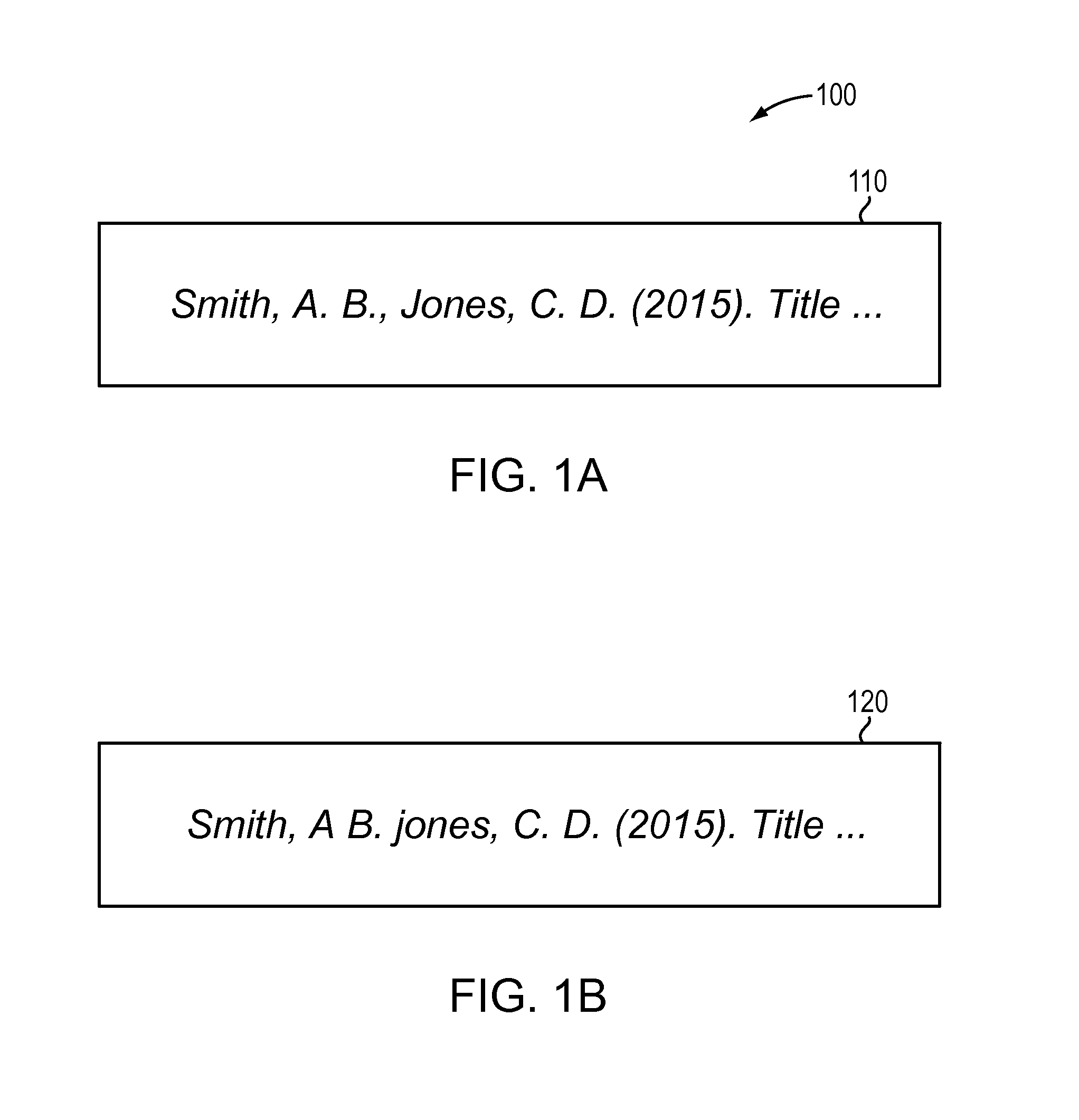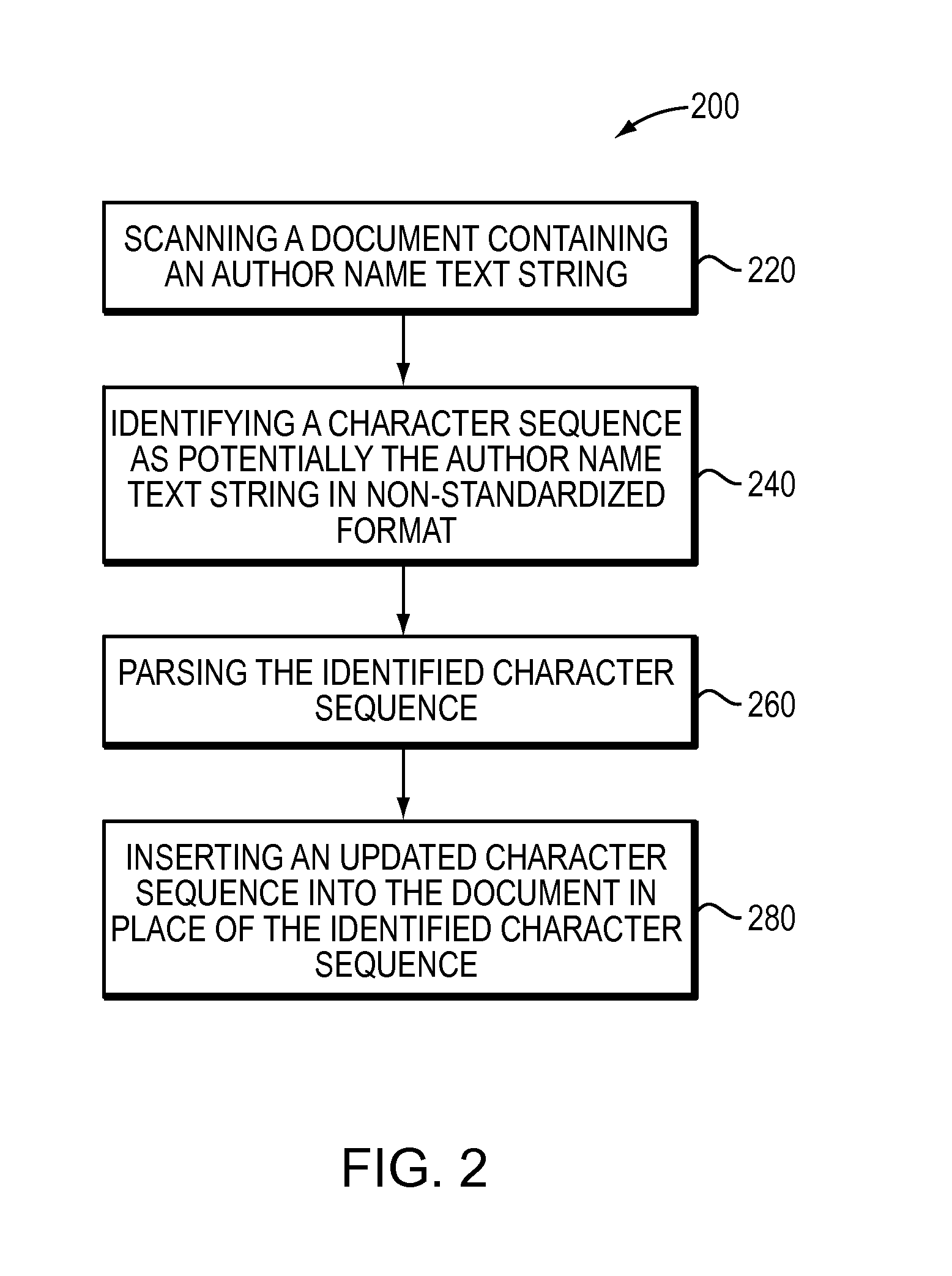Parsing author name groups in non-standardized format
a technology of author name and non-standardized format, applied in the field of author name group parsing in non-standardized format, can solve the problems of wasting time, wasting time, and wasting time, and wasting time on checking the accuracy of the components of the formatted references
- Summary
- Abstract
- Description
- Claims
- Application Information
AI Technical Summary
Benefits of technology
Problems solved by technology
Method used
Image
Examples
example 1
“Smith, A B. jones,&tab;C. D.”=> [“”, “S”, “m”, “i”, “t”, “h,”, “A”, “B.”, “j”, “o”, “n”, “e”, “s,&tab;”, “C.”, “D.”]
example 2
“&tab;Smith A B.”=> [“&tab;”, “S”, “m”, “i”, “t”, “h”, “A”, “B.”]
Marking Up Author Name Groups
[0064]Once the parser method 260 (step 320) saves a copy of the identified character sequence as an array in memory, a parser step 340 updates the identified character sequence. Step 340 may first convert any punctuation, face-markup, white space, or other such characters between words in the identified character sequence to a single space character, such as a single space (ASCII ×20 character). For example, “A B.” and “C. D.” from FIG. 1B may be converted to “A B” and “C D”. Next, step 360 may use a similar identifying method as described above in the “Scanning and Identifying Author Name Groups” section to identify the specific “surname followed by initials” or “initials followed by surname” pattern comprising each author name contained in the character sequence. Then, this identifying method may be further used at 360 to identify the individual surname and set of initials components cont...
example 3
“SmithA B JonesC D ”.
[0100]The parser at step 390 may then save the marked up character sequence in a similar manner as the original identified character sequence at step 320. Similar to the method used for saving the original identified character sequence, the alphanumeric characters of the marked up character sequence may be used as anchors to split the marked up sequence into multiple pieces. That is, the first piece starts with the first character of the marked up character sequence, regardless of whether the first character is an alphanumeric character. The first piece contains all the non-alphanumeric characters from the beginning of the character sequence up to the first alphanumeric character in the sequence (it may be an empty set). The second piece contains that alphanumeric character and all the following non-alphanumeric characters (if any), up to the following alphanumeric character. Additional pieces are formed in the same manner as the second piece until reaching the ...
PUM
 Login to View More
Login to View More Abstract
Description
Claims
Application Information
 Login to View More
Login to View More - R&D
- Intellectual Property
- Life Sciences
- Materials
- Tech Scout
- Unparalleled Data Quality
- Higher Quality Content
- 60% Fewer Hallucinations
Browse by: Latest US Patents, China's latest patents, Technical Efficacy Thesaurus, Application Domain, Technology Topic, Popular Technical Reports.
© 2025 PatSnap. All rights reserved.Legal|Privacy policy|Modern Slavery Act Transparency Statement|Sitemap|About US| Contact US: help@patsnap.com



